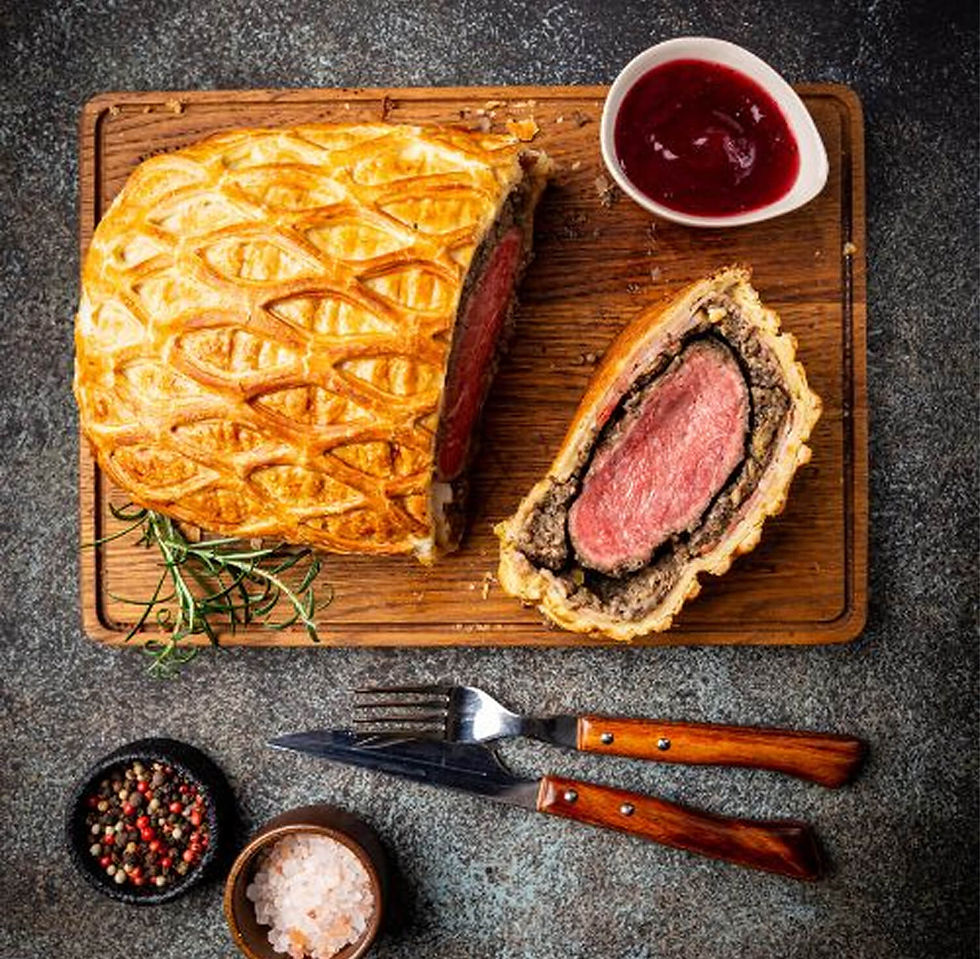Charting Basal Body Temperature
- Abigail Rodenburgh
- Jul 23
- 3 min read
In the world of Apple Watch and Natural Cycles, using basal body temperature (BBT) to track your cycles is all the rage. This isn't new technology, women have been using the Temperature Method to identify ovulation since the 1950s. You don't need a costly device or app to comprehend your body, by monitoring BBT.
Understanding your body and its cycles can be a powerful tool in your journey to fertility awareness. Many people like sing BBT because temperature data is not subjective. Not only is this method straightforward and effective, but it also does not require any expensive femtech device. In this post, we’ll explore how you can easily chart BBT and some options.
What is Basal Body Temperature?
Basal body temperature is your body's temperature at rest, typically measured first thing in the morning before any physical activity. This temperature can fluctuate throughout your menstrual cycle; for instance, it drops slightly before ovulation and rises afterward due to increased progesterone levels. Tracking these changes helps you identify your fertile windows, which can be used to avoid or achieve pregnancy
The simplicity of this method is one of its strong points. You do not need to invest in high-tech smart thermometers or specialized applications. A basic digital thermometer, which provides accurate measurements, is all you need.
How to Measure Basal Body Temperature
Choose a reliable thermometer: A digital thermometer is generally best for accuracy. Choose a thermometer that measures to the hundredth of a degree. Finding a For example, a typical basal thermometer can read 97.26°F instead of just 97.3°F, which is essential to identify the thermal shift as soon as possible. Its also beneficial to find one with a "recall" function. Here is an inexpensive Basal Body Thermometer I have personally tested.
Consistent time: Take your temperature at the same time each morning. Aim to do this immediately after waking, but definitely after 3 full hours of sleep. Your body should ideally be at rest, so avoid getting out of bed.
Recording your temperature: Create a chart to track your daily temperature. Use a notebook or an app like Read Your Body. Printable templates are readily available online, and one often comes with the thermometer.
Identify patterns: Over time, you will see a consistent pattern in your BBT, leading to the identification of your ovulation period. Typically, your temperature should rise between 0.5 to 1 degree Fahrenheit after ovulation.
Why You Don’t Need Fancy Tech
While modern technology can make tracking easier, it is not a necessity for effective fertility awareness. Many individuals have successfully charted their BBT using simple tools without spending money on gadgets.
However there are some use cases where wearables can be helpful:
Disturbed Sleep: If you have disturbed sleep due to sleep apnea or some other condition, it can make it difficult to get 3 hours of sleep before temping. Most wearables have built in functions to account for overnight disturbances.
Breastfeeding: If you are breastfeeding overnight, it can often lead to disturbed sleep especially in the early morning hours. This can make it difficult to find a good time to take your BBT, unless you take it in the middle of the night.
Busy Mornings: If you are forgetful to take your temperature first thing in the morning, sometimes wearables can make tracking BBT more approachable.
If you are interested in a wearable thermometer I recommend Tempdrop (follow the link for 15% off) or the Oura Ring. Tempdrop only has to be worn at night and gives you full access to your data in their free app. The Oura ring does have a monthly fee to access your temperature directly, however you can still see the trends without paying for natural cycles.
.
Pitfalls to Avoid
While charting BBT is simple, there are some common pitfalls:
Sleep disturbances: If you had a restless night, your BBT might not be reliable. Note it as “unreliable” for that day to avoid confusion.
Illness or medications: When you're sick or taking medications that might alter body temperature, it’s essential to log these instances in your chart.
Emotional fluctuations: Stress and life changes can impact your cycle and BBT. Make sure to acknowledge these factors when analyzing your data. According to researchers, stress can delay ovulation by an average of 3–6 days for some women.
Learn more about Charting
If you want to learn more about using BBT in your charting, check out my course: Charted Wisdom. This is a transformative course for women who were never taught how to speak the language of their bodies.
1
Searing the Beef
Sear beef fillets on high heat for 2 minutes per side to form a golden crust. Let it cool before proceeding to keep the beef tender.
1
Searing the Beef
Sear beef fillets on high heat for 2 minutes per side to form a golden crust. Let it cool before proceeding to keep the beef tender.
1
Searing the Beef
Sear beef fillets on high heat for 2 minutes per side to form a golden crust. Let it cool before proceeding to keep the beef tender.
1
Searing the Beef
Sear beef fillets on high heat for 2 minutes per side to form a golden crust. Let it cool before proceeding to keep the beef tender.
Notes



1
Season the good fresh beef fillets with salt and black pepper. Heat olive oil in a pan over high heat and sear the fillets for 2 minutes per side until it fully browned. Remove the beef from the pan and brush with a thin layer of mustard. Let it cool.



1
Season the good fresh beef fillets with salt and black pepper. Heat olive oil in a pan over high heat and sear the fillets for 2 minutes per side until it fully browned. Remove the beef from the pan and brush with a thin layer of mustard. Let it cool.



1
Season the good fresh beef fillets with salt and black pepper. Heat olive oil in a pan over high heat and sear the fillets for 2 minutes per side until it fully browned. Remove the beef from the pan and brush with a thin layer of mustard. Let it cool.



1
Season the good fresh beef fillets with salt and black pepper. Heat olive oil in a pan over high heat and sear the fillets for 2 minutes per side until it fully browned. Remove the beef from the pan and brush with a thin layer of mustard. Let it cool.
Instructions
Quality Fresh 2 beef fillets ( approximately 14 ounces each )
Quality Fresh 2 beef fillets ( approximately 14 ounces each )
Quality Fresh 2 beef fillets ( approximately 14 ounces each )
Beef Wellington

Beef Wellington
Fusion Wizard - Rooftop Eatery in Tokyo
Author Name

Beef Wellington is a luxurious dish featuring tender beef fillet coated with a flavorful mushroom duxelles and wrapped in a golden, flaky puff pastry. Perfect for special occasions, this recipe combines rich flavors and impressive presentation, making it the ultimate centerpiece for any celebration.
Servings :
4 Servings
Calories:
813 calories / Serve
Prep Time
30 mins
Prep Time
30 mins
Prep Time
30 mins
Prep Time
30 mins


Comments